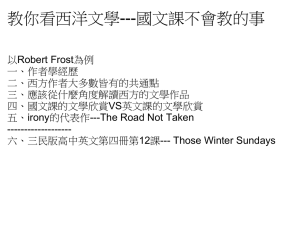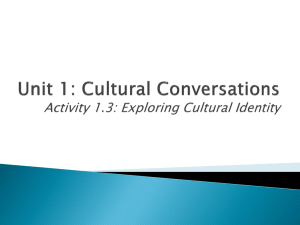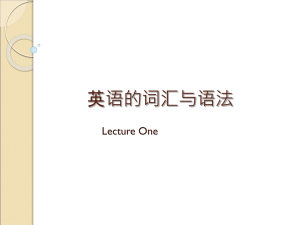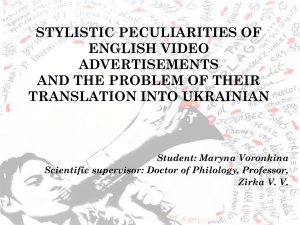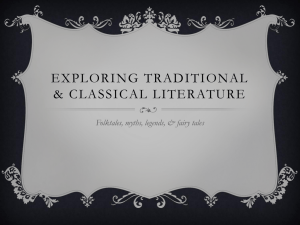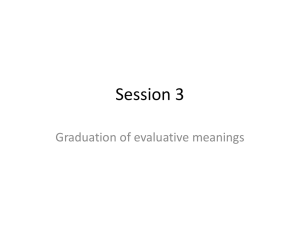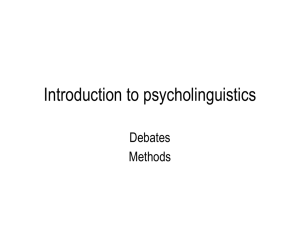Graphical stylistic means
advertisement
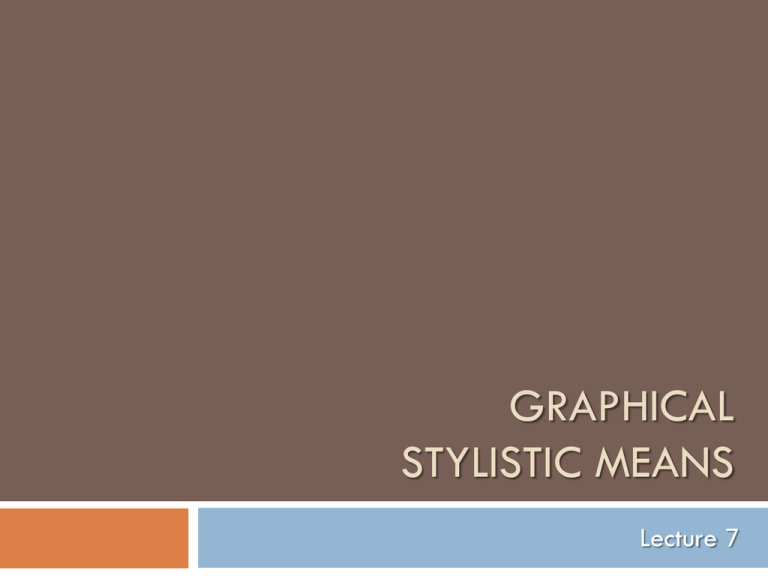
GRAPHICAL STYLISTIC MEANS Lecture 7 Graphical Stylistic Means include emphatic use of punctuation, change of type, spelling changes (graphons); serve to convey in the written form the emotions which in the oral speech are expressed by means of intonation, stress and pauses. 1. Emphatic use of punctuation All the marks of punctuation can be used to reflect the emphatic intonation of the speaker. The most frequently used one is the exclamation mark! Emphatic punctuation is used in many stylistic devices, but it can also be used in utterances which contain none: And there – drinking at the bar – was – Robert! 2. The change of type Is a rather common means of indicating stress and other changes in prosodic elements, includes: italics, bold type, h-y-p-h-e-n-a-t-i-o-n, s p a c i n g o u t, mmmmmultiplication and CAPITALIZATION. The change of type serves to convey exaggerated articulation: la-a-arge… I des-pise you! Allll aboarrrrd! contributes to the overall meaning of a literary work (poems): Alice in Wonderland, The concrete poem Alice in Wonderland Fury said to a mouse, That he met in the house, 'Let us both go to law: I will prosecute you.— Come, I'll take no denial; We must have a trial: For really this morning I've nothing to do.' Said the mouse to the cur, 'Such a trial, dear Sir, With no jury or judge, would be wasting our breath.' 'I'll be judge, I'll be jury,' Said cunning old Fury: 'I'll try the whole cause, and condemn you to death. Graphon Intentional violation of the graphic form / shape of a word to reflect its authentic pronunciation graphic fixation of phonetic peculiarities of a character’s pronunciation. Zis man? Gimme a chance! Graphon May reflect: education, carelessness, physical defects (lisping, stammer, stutter), stumbling, intoxication, old age, tender age, a local accent, a foreign accent. How to Analyze a Poem The Road Not Taken by R.Frost (1) (2) (3) (4) (5) (6) (7) (8) (9) (10) (11) (12) (13) (14) (15) (16) (17) (18) (19) (20) Two roads diverged in a yellow wood, And sorry I could not travel both And be one traveler, long I stood And looked down one as far as I could To where it bent in the undergrowth; Then took the other, as just as fair, And having perhaps the better claim, Because it was grassy and wanted wear; Though as for that the passing there Had worn them really about the same, And both that morning equally lay In leaves no step had trodden black. Oh, I kept the first for another day! Yet knowing how way leads on to way, I doubted if I should ever come back. I shall be telling this with a sigh Somewhere ages and ages hence: Two roads diverged in a wood, and I— I took the one less traveled by, And that has made all the difference. R.Frost 1. Phonetic level Step 1 – counting syllables, identifying feet and meter according to the PREVAILING foot There can and WILL be deviations from the metrical pattern Two ROADS di VERGED in a YEL low WOOD U / U / U U / U / And SOR ry I could not TRA vel BOTH U / U / U U / U / And BE one TRA vel ler LONG I STOOD U / U / U U / U / And LOOKED down ONE as FAR as I COULD U / U / U / U U / To WHERE it BENT in the UN der GROWTH U / U / U U / U / Metrical pattern U / - iamb The foot is repeated 4 times – tetrameter => iambic tetrameter BUT: ◦ UU/ - an additional syllable in every line; the line is HYPERMETRIC OR: iambic tetrameter, where one foot is written in anapest Don’t forget to mention any meaningful deviations from the usual stress pattern. For instance: ◦ I TOOK the ONE LESS traveled BY – the line reveals an inverted order of stressed and unstressed syllables in order to foreground the word LESS; ◦ And that has made all the DIFfeRENCE – the word acquires an additional stress for the sake of rhythm. Rhyme Step 2 ◦ Identify the type of each rhyme: its arrangement, similarity and structure. ◦ There can and WILL be deviations here, too. This is Sparta poetry. (a) (b) (a) (a) (b) Two roads diverged in a yellow WOOD, And sorry I could not travel both And be one traveler, long I STOOD And looked down one as far as I COULD To where it bent in the undergrowth The pattern of rhyming: a b a a b The type of rhyme – masculine perfect Phonetic Stylistic Devices Step 3 ◦ Alliteration - ? ◦ Assonance - ? ◦ Onomatopoeia - ? And be one traveler, long I STOOD (3) And LOOKED down one as far as I COULD (4) 2. Morphological level Transposition of grammatical categories ? …[the road] was grassy and wanted wear (8) – the use of verbs of desire / mental activity with inanimate objects (which results in lexical stylistic device of personification) 3. Lexical level [the road] bent in the undergrowth (5), [the road] having … the better claim (7), [the road] wanted wear (8): ◦ ◦ ◦ ◦ ◦ metaphors (personification): trite, simple, embodied in a V+N constructions; perform the function of predicate. no step had trodden black (12): ◦ metonymy ◦ based on the relations between the object (here regarded as a kind of an instrument) and the process; + agent > result of action ◦ fresh; ◦ expressed by a N; by a V+Adj; ◦ performs the function of the subject of the sentence; predicate. Morphemic repetition The lexical repetition of the words with the same root morpheme travel: ◦ serves as a means of cohesion: ◦ being repeated at the beginning of the poem and at the end of it, it unites the stanzas into a coherent whole travel (2), traveller (3) and travelled (19). Lexical markers of poetic style If there are words that belong to poetic style (lofty, bookish) – or to colloquial, or… – point it out. Lexical markers of poetic style: ◦ had trodden (12), hence (17). 4. Syntactical level Inversion: ◦ sorry I could not travel both (2) ◦ be one traveler, long I stood (3), - the occurrence of AM in the preposition: ◦ to create emphasis, ◦ to foreground the logical meaning of the word. Two roads diverged in a yellow wood, And sorry I could not travel both And be one traveler, long I stood And looked down one as far as I could To where it bent in the undergrowth ◦ polysyndeton: ◦ the repetition of the conjunction and helps to create rhythm and euphony. =The End=

